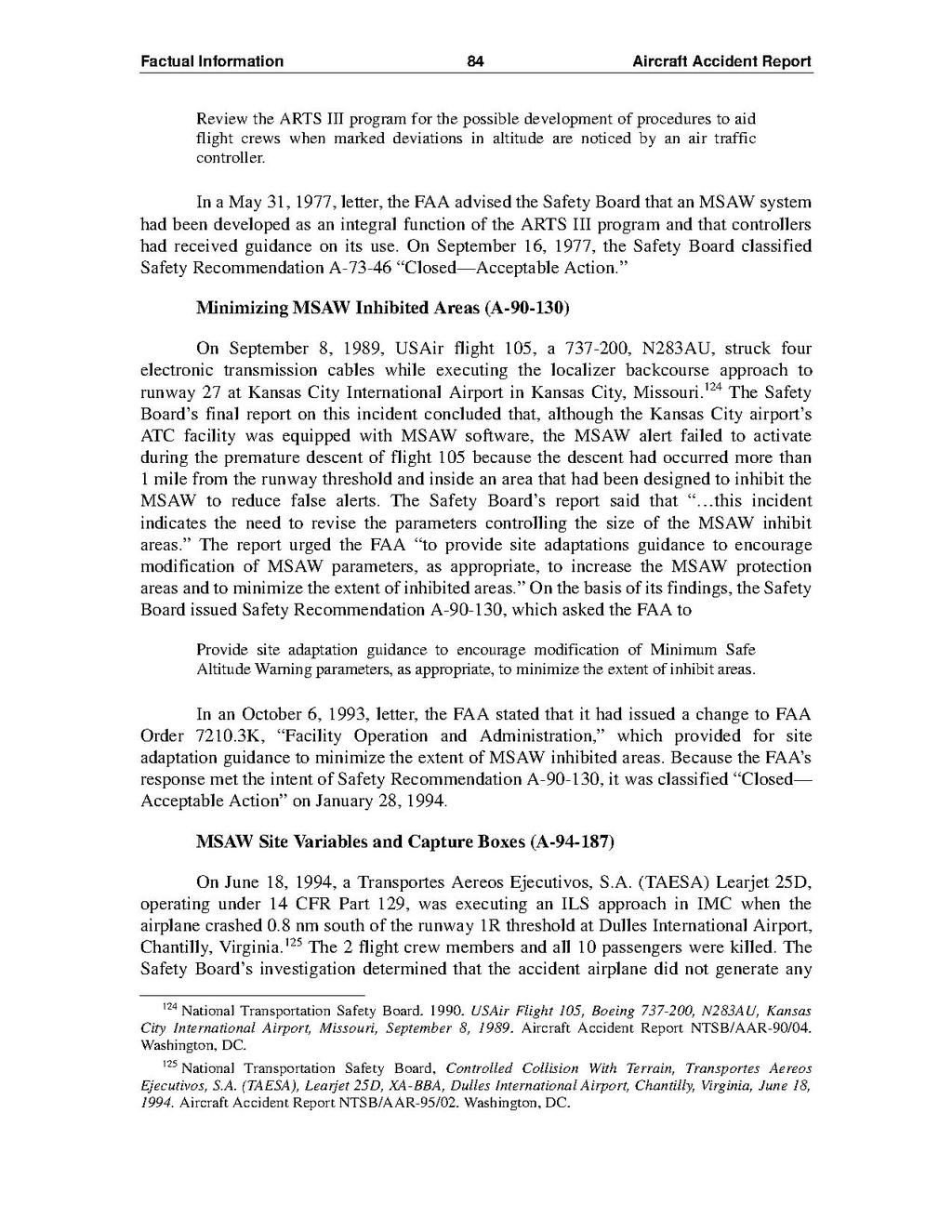Review the ARTS III program for the possible development of procedures to aid flight crews when marked deviations in altitude are noticed by an air traffic controller.
In a May 31, 1977, letter, the FAA advised the Safety Board that an MSAW system had been developed as an integral function of the ARTS III program and that controllers had received guidance on its use. On September 16, 1977, the Safety Board classified Safety Recommendation A-73-46 "Closed--Acceptable Action."
Minimizing MSAW Inhibited Areas (A-90-130)
On September 8, 1989, USAir flight 105, a 737-200, N283AU, struck four electronic transmission cables while executing the localizer backcourse approach to runway 27 at Kansas City International Airport in Kansas City, Missouri.[1] The Safety Board's final report on this incident concluded that, although the Kansas City airport's ATC facility was equipped with MSAW software, the MSAW alert failed to activate during the premature descent of flight 105 because the descent had occurred more than 1 mile from the runway threshold and inside an area that had been designed to inhibit the MSAW to reduce false alerts. The Safety Board's report said that "...this incident indicates the need to revise the parameters controlling the size of the MSAW inhibit areas." The report urged the FAA "to provide site adaptations guidance to encourage modification of MSAW parameters, as appropriate, to increase the MSAW protection areas and to minimize the extent of inhibited areas." On the basis of its findings, the Safety Board issued Safety Recommendation A-90-130, which asked the FAA to
Provide site adaptation guidance to encourage modification of Minimum Safe Altitude Warning parameters, as appropriate, to minimize the extent of inhibit areas.
In an October 6, 1993, letter, the FAA stated that it had issued a change to FAA Order 7210.3K, "Facility Operation and Administration," which provided for site adaptation guidance to minimize the extent of MSAW inhibited areas. Because the FAA's response met the intent of Safety Recommendation A-90-130, it was classified "Closed-- Acceptable Action" on January 28, 1994. MSAW Site Variables and Capture Boxes (A-94-187)
On June 18, 1994, a Transportes Aereos Ejecutivos, S.A. (TAESA) Learjet 25D, operating under 14 CFR Part 129, was executing an ILS approach in IMC when the airplane crashed 0.8 nm south of the runway 1R threshold at Dulles International Airport, Chantilly, Virginia.[2] The 2 flight crew members and all 10 passengers were killed. The Safety Board's investigation determined that the accident airplane did not generate any
- ↑ National Transportation Safety Board. 1990. USAir Flight 105, Boeing 737-200, N283AU, Kansas City International Airport, Missouri, September 8, 1989. Aircraft Accident Report NTSB/AAR-90/04. Washington, DC.
- ↑ National Transportation Safety Board, Controlled Collision With Terrain, Transportes Aereos Ejecutivos, S.A. (TAESA), Learjet 25D, XA-BBA, Dulles International Airport, Chantilly, Virginia, June 18, 1994. Aircraft Accident Report NTSB/AAR-95/02. Washington, DC.
